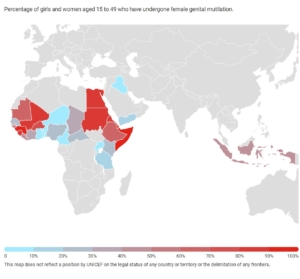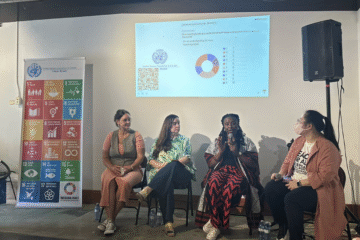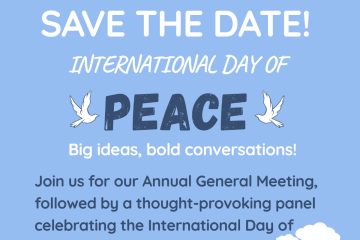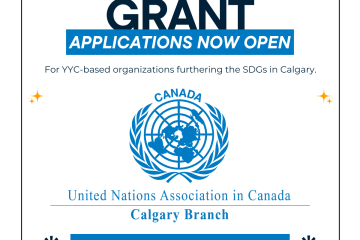The travesty of Female Genital Mutilation (FGM)
By: Zara Obaa
“Female Genital Mutilation is not simply a destruction of bodily tissue, it’s an attempt at the destruction of a little girl’s spirit” – Unknown
The United Nations General Assembly has designated February 6 as the International Day of Zero Tolerance for Female Genital Mutilation, with the aim to amplify and direct the efforts on the elimination of this practice.
Maryan’s Story
“I was cut at six years old. I still remember that day. The sharp cut. The unbearable pain. And the aftermath. I went through the most severe type of female genital mutilation, infibulation. They sewed everything together and left only a tiny opening. Yet this was something I had been taught to look forward to because it had to happen. Because every girl had to go through it. ” Story abstract from End FGM Canada Network. Read Maryan’s complete story here.
This is how the story begins for most survivors of female genital mutilation (FGM).
Statistics show that at least two hundred million girls and women living in thirty countries have undergone FGM.
What is Female genital mutilation (FGM)?
According to UNICEF, “Female genital mutilation (FGM) is a procedure performed on a woman or girl to alter or injure her genitalia for non-medical reasons. It most often involves the partial or total removal of her external genitalia. FGM is a violation of girls’ and women’s fundamental human rights. Each year, around four million girls worldwide are at risk of undergoing female genital mutilation (FGM), with most girls cut before the age of fifteen.”
Studies carried out by the organization also show that FGM is generally performed in countries, where gender inequality and violence against girls and women is socially acceptable. From being considered as a rite of passage into womanhood, to a method of suppressing a woman’s sexuality. Many of these communities hold the belief that it will secure a good marriage and/or preserve the family’s honour. To some, FGM has also been considered a religious practice.
It should be noted that FGM has no health benefit and that there are both short-term and long-term effects which include: severe pain and excessive bleeding, difficulty when passing urine, cysts, infections, and infertility, psychological problems, diminished sexual pleasure, complications in childbirth and higher risk of new-born deaths.
At this point, it is important to consider the prevalence of this practice. Is the practice of FGM still ongoing and how is it evolving?
In an article in the Reproductive Health Journal, by Muteshi, J.K., Miller, S. & Belizán, they suggest that the prevalence of FGM varies across countries.

Source: UNICEF global databases, 2021, based on Multiple Indicator Cluster Surveys (MICS), Demographic and Health Surveys (DHS) and other national surveys, 2004 – 2020.
Female Genital Mutilation (FGM) Statistics – UNICEF Data. (2022, February 4) states, of 31 countries with available data on FGM, “large-scale representative surveys that shows that the practice of FGM is highly concentrated in countries from the Atlantic coast to the Horn of Africa, in Middle East areas like Iraq and Yemen and in Asian countries like Indonesia, with differences in pervasiveness. In places like Somalia, Guinea and Djibouti, the prevalence levels is 90%, but it affects no more than 1% of girls and women in Cameroon and Uganda.”
The organization further confirms, that even though there are variations in the type of FGM performed, FGM also exists in places like Colombia, India, Malaysia, Oman, Saudi Arabia, and the United Arab Emirates. Migration has also brought the practice to certain areas of Europe, Australia and North America.
The practice has also been found to be happening in Canada.
An 2018 article by GlobalCitizen.org cites a study by anti-FGM organization Sahiyo. The study showed that women, primarily from one community, had undergone the practice within Canadian borders.
Disturbingly, UNICEF also reports that “in many countries, FGM is increasingly carried out by trained health care professionals,” This of course goes against the Hippocratic Oath to “do no harm,” and Article 25 of the Universal Declaration of Human Rights.
That the practice is carried out by health professionals does not make it safer, as “it still involves the removal of healthy and normal tissues. This is damaging and interferes with the natural functions of female bodies.”
Resistance to the practice in some communities has led to secrecy in carrying it out in younger girls. But the good news is that this resistance is spreading knowledge about the harm that the practice of FGM is. UNICEF reports “in countries affected by FGM, 7 in 10 girls and women think the practice should end. In the last 2 decades, the number of girls and women who want this practice to end has doubled.”
What is the world community doing to eliminate this practice?
Ending FGM requires work at many levels, from families and communities to laws, and political commitment at the local, regional, national and international levels.
UNICEF and the United Nations Population Fund (UNFPA) jointly lead the largest global program to end FGM. The program supports zero tolerance laws and policies, while working with health workers to both eliminate female genital mutilation and provide care to women and girls who have undergone the procedure.
The Canadian government is also working alongside organizations like UNICEF by providing funding support to end FGM, as well as other forms of gender-based violence (GBV) – globally.
If after reading this article, you are wondering where/how to lend support to this cause, I’ll say you can begin by hitting the share button. Awareness at every level is a great support!
————————–
About Zara Obaa
Zara is an internationally trained lawyer in the process of requalifying in Alberta. She began volunteering with UNAC Calgary in December, 2021. She is interested in the UN Sustainable Development Goals which are global goals designed to be a “blueprint to achieve a better and more sustainable future for all”. Zara is especially interested in how these goals will shape the future. She is happy to play a small part in spreading the awareness of these goals!
References and resources
- Survivor Stories. (2022). End FGM Canada Network. https://www.endfgm.ca/stories
- Marchildon, J. (2018, February 6). The Truth About the Secretive Practice of “FGM” In Canada. Global Citizen. https://www.globalcitizen.org/en/content/fgm-in-canada-2/
- Female genital mutilation: where, why and consequences | News | European Parliament
- Canada’s response to female genital mutilation: Are we failing our girls?
- Muteshi, J.K., Miller, S. & Belizán, J.M. The ongoing violence against women: Female Genital Mutilation/Cutting. Reprod Health 13, 44 (2016). https://doi.org/10.1186/s12978-016-0159-
- Unicef Canada. (2021, February 4). What Is Female Genital Mutilation? Eight Important Questions Answered. UNICEF Canada : For Every Child. https://www.unicef.ca/en/blog/female-genital-mutilation-eight-important-questions
- Female Genital Mutilation (FGM) Statistics – UNICEF Data. (2022, February 4). UNICEF DATA. https://data.unicef.org/topic/child-protection/female-genital-mutilation/#_edn1
- What is female genital mutilation? 7 questions answered. (2019, March 4). UNICEF.Org. https://www.unicef.org/stories/what-you-need-know-about-female-genital-mutilation



